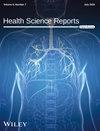摘要
背景和目的 COVID-19 大流行对呼吸道病原体的传播动态和流行病学产生了深远影响,这主要归因于非药物干预措施(NPIs)。本研究旨在评估非药物干预对冬季呼吸道病原体特征的影响。 方法 本研究收集了本医院在两个不同时期接受检测的所有患者的呼吸道病原体检测结果:分别为 2021 年 9 月至 2022 年 5 月和 2022 年 9 月至 2023 年 5 月。阳性率的比较采用 χ2 检验。P 值小于 0.05 表示无统计学意义。数据分析采用 SPSS 22.0 版。 结果 2021/2022 年流感季节的主要病原体被确定为 Inf B(1095/9309,11.76%)。相反,在 2022/2023 年流感季节,甲型流感病毒成为最流行的病原体(4040/18770,21.52%)。值得注意的是,在 2022/2023 年流感季节,副流感病毒和肺炎双球菌的阳性率较低,而嗜肺病毒的阳性率较高。此外,与 2021/2022 年流感季节相比,2022/2023 年流感季节的 SARS-CoV-2 阳性病例增加了近五倍。 结论 本研究的结果表明,放宽非传染性疾病的限制对某些呼吸道病原体在人群中的传播有显著影响。我们建议实施持续监测,以监控各种呼吸道病原体的流行病学和进化动态,尤其是在不再需要非传染性病原体的情况下。

Background and Aims
The COVID-19 pandemic has profoundly impacted the transmission dynamics and epidemiology of respiratory pathogens, primarily due to non-pharmaceutical interventions (NPIs). This study aims to evaluate the effects of NPIs on the characteristics of winter respiratory pathogens.
Methods
This study involved the collection of respiratory pathogen test results from all patients tested at our hospital during two distinct periods: September 2021 to May 2022 and September 2022 to May 2023. The comparison of positive rates was performed using the χ2 test. A p-value less than 0.05 indicates no statistical significance. Data analysis was performed using SPSS version 22.0.
Results
The predominant pathogen during the 2021/2022 flu seasons was identified as Inf B (1095/9309, 11.76%). Conversely, during the 2022/2023 flu seasons, Inf A emerged as the most prevalent pathogen (4040/18,770, 21.52%). Notably, the positive rates of parainfluenza virus and M. pneumoniae were lower in the 2022/2023 flu seasons, while the positive rate of L. pneumophila was higher. Furthermore, the number of positive SARS-CoV-2 cases in the 2022/2023 flu seasons increased nearly fivefold compared to the 2021/2022 flu seasons.
Conclusions
The findings of this study suggest that the relaxation of NPIs has a notable influence on the transmission of certain respiratory pathogens within the population. We propose the implementation of ongoing surveillance to monitor the epidemiology and evolutionary dynamics of various respiratory pathogens, particularly in situations where NPIs are no longer necessary.

 求助内容:
求助内容: 应助结果提醒方式:
应助结果提醒方式:


